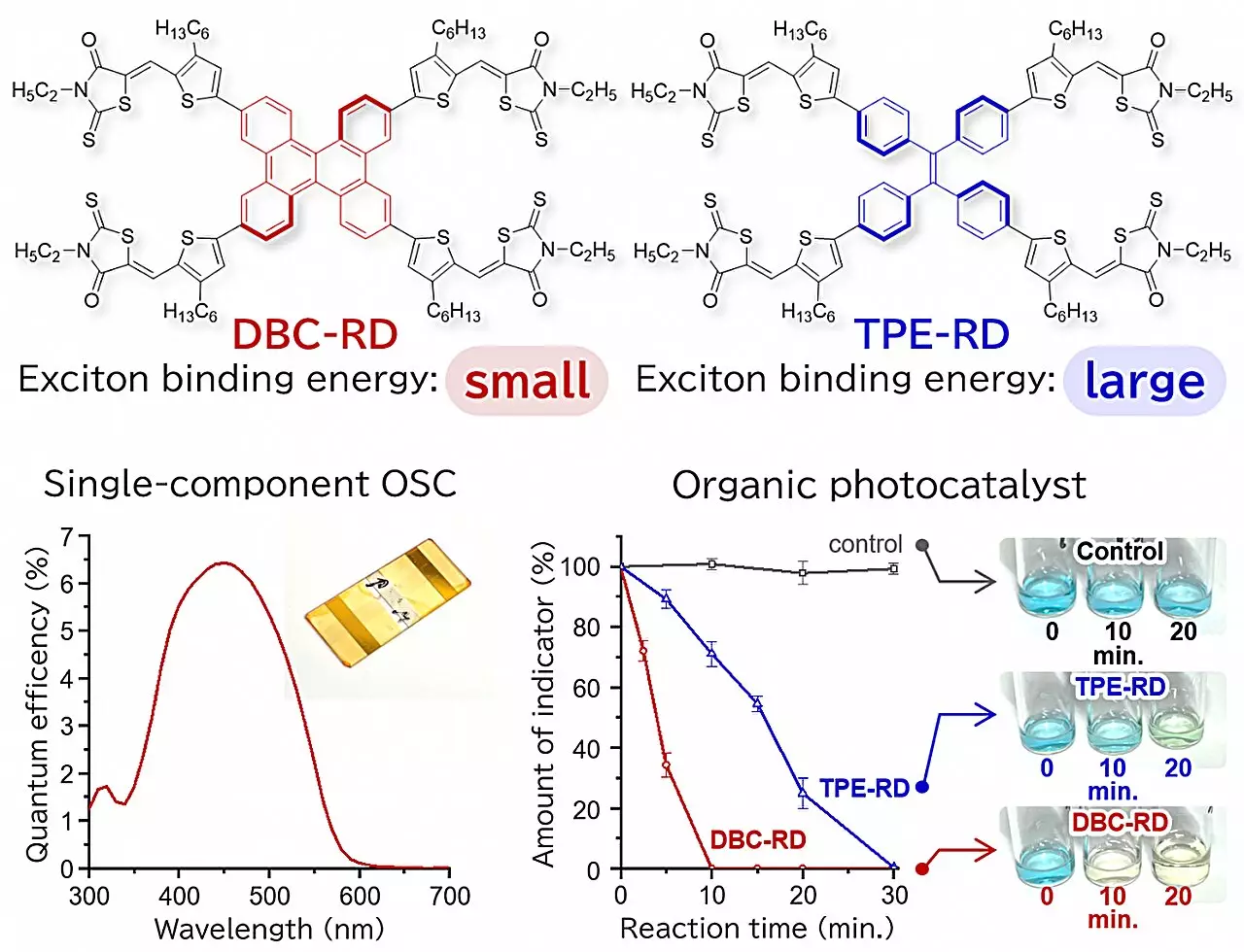Embracing renewable energy sources is imperative for achieving a sustainable future. Among these, solar energy stands out due to its abundance and eco-friendliness. Central to harnessing solar power are optoelectronic devices, particularly solar cells, that play a crucial role in converting sunlight into usable electricity. Recent research from Osaka University is shedding light on groundbreaking strategies to improve the efficiency of these devices, emphasizing the significance of molecular organization.
The efficiency of organic solar cells primarily hinges on how well light-absorbing organic molecules can transform solar energy into electric current. The process involves generating free-charge carriers—molecules that facilitate electrical flow. A key factor in this process is the exciton-binding energy, the amount of energy required to create these free-charge carriers. Ideally, a lower exciton-binding energy enhances device performance, yet creating molecules that exhibit this ideal property in solid form remains a challenge.
The recent study dives deep into how molecular stacking—specifically, how molecules align and aggregate—affects exciton-binding energy. The researchers synthesized two variants of star-shaped molecules, differing in their central structure: one flexible, the other rigid. While both molecules demonstrated similar characteristics in solution, their behavior diverged sharply when compacted into solid films. This stark contrast underscores the critical impact of molecular rigidity on performance.
The findings of the Osaka University team reveal that rigid molecules can stack more efficiently, resembling plates aligned instead of jumbled. This specific arrangement allows rigid molecules to significantly lower exciton-binding energy compared to their flexible counterparts. The implications of this discovery are profound, as it provides a pathway to enhancing solar cell performance through molecular design.
To substantiate their findings, the researchers created a single-component organic solar cell and a photocatalyst from each type of molecule. The results were telling: the devices fashioned from the rigid molecules exhibited superior performance, attributed to their reduced exciton-binding energy that facilitated the efficient generation of free-charge carriers. These outcomes pave the way for a deeper understanding of how molecular dynamics influence device efficiency.
The research leads to an exciting potential for future advancements in organic optoelectronic devices. By leveraging the principles outlined in this study, designers can develop new molecules that not only absorb light more effectively but also promote better charge generation through strategic molecular stacking.
This innovative approach to tackling the challenges of exciton-binding energy could significantly reshape the landscape of solar technology, leading to higher efficiency and more versatile applications in renewable energy. As we strive for a greener future, findings such as these serve as a reminder of the intricate and fascinating relationships within materials science that can drive substantial progress in sustainability efforts.
The study from Osaka University marks a critical step toward realizing the full potential of solar energy, showcasing how molecular characteristics significantly impact the performance of organic solar cells, ultimately contributing to a cleaner, more sustainable world.


Leave a Reply